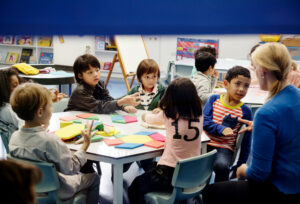Teaching children about road safety is crucial for helping them stay safe and aware of potential hazards on the streets. Children are naturally curious and often impulsive, so instilling these safety habits early can significantly reduce the risk of accidents. Below are essential road safety measures that children should understand and follow to promote their safety as pedestrians, cyclists, and passengers in vehicles.
1. Understanding Traffic Signals and Signs
Children should learn the basic traffic signals and signs, as these will guide their actions on the road. Teaching them the meaning of these signals fosters awareness and confidence.
Traffic Light Colors:
Red means stop: Children should learn to recognize this signal as an indicator to halt before crossing.
Green means go: This signal indicates it’s safe to cross, but they should still look both ways.
Yellow means slow down or prepare to stop: It’s essential to teach children that yellow lights signal caution.
Pedestrian Signs:
Familiarize children with pedestrian signs, such as the “walk” signal and “do not walk” signs, which indicate safe areas to walk and when to wait.
Common Road Signs:
Explain stop signs, pedestrian crossings, and speed limit signs to help children recognize areas where they need to exercise caution.
Understanding these signals helps children feel more confident and informed when walking near roads or crossing streets. This foundational knowledge is vital for their safety and encourages them to take responsibility for their own safety.
2. The Importance of Using Crosswalks and Sidewalks
Using designated crosswalks and sidewalks is one of the safest ways for children to navigate busy roads.
Always Use Crosswalks:
Teach children that crossing at designated crosswalks is the safest method to get across the street. Remind them to wait for the “walk” signal when available.
Stay on Sidewalks:
Children should be encouraged to stick to sidewalks and avoid straying into the street. Sidewalks provide a buffer between pedestrians and vehicles, enhancing safety.
Using these designated areas reduces the likelihood of accidents and keeps children safer when they are near traffic. Emphasizing the importance of crosswalks and sidewalks establishes good habits that they will carry into adulthood.
3. Looking Left, Right, and Left Again
One of the most basic yet essential safety habits is teaching children to look both ways before crossing any street:
Look Left-Right-Left:
Encourage them to look left, then right, and left again before stepping into the road. This ensures they catch any oncoming traffic from either direction.
Be Alert for Turning Vehicles:
Remind children that even at crosswalks, vehicles might be turning. They should stay alert for any movement.
Practicing this habit consistently helps children remember to double-check for any vehicles before crossing. This simple act can significantly reduce the risk of accidents.
4. Avoiding Distractions While Walking
With technology and other distractions around, children need to understand the importance of staying focused when crossing streets:
No Phones or Headphones:
Using a phone or listening to music can diminish their awareness of traffic. Encourage them to put these devices away while walking.
Stay Focused:
Discuss how even small distractions can lead to dangerous situations on the road.
By paying full attention, children can make safer decisions and react quickly to any unexpected hazards. This emphasis on focus promotes their overall safety while walking.
5. Understanding the Dangers of Running Near Roads
Children often enjoy running and playing, but they need to learn that roads aren’t the place for it:
No Running Near Roads:
Explain to children why running close to or across streets can be dangerous. They may miss seeing a vehicle or misjudge distance, leading to accidents.
Walk, Don’t Run Across Streets:
Even when using crosswalks, children should walk, not run, to avoid tripping or stepping out unexpectedly.
Creating this rule reinforces the idea that roads are places to move carefully and attentively. Instilling this knowledge helps children recognize the inherent dangers of rushing near traffic.
6. The Importance of Visibility
Ensuring children are visible to drivers is a key part of road safety:
Wear Bright or Reflective Clothing:
Teach children to wear bright or reflective clothing, especially when walking during early morning or evening hours, when visibility is lower.
Use Reflective Accessories:
Encourage the use of reflective armbands, backpacks, and jackets to help drivers spot them more easily in low-light conditions.
Improving visibility makes it easier for drivers to see children, reducing the risk of accidents. Emphasizing visibility can help children understand how their clothing choices impact their safety on the road.
7. Understanding Safe and Unsafe Play Areas
Children often play outside, but they should understand that not all areas are safe for play:
Play in Safe Zones:
Teach children to play in designated play areas, such as parks or backyards, rather than near roads.
Avoid Retrieving Objects Near Roads:
If a toy or ball rolls onto the street, children should know to ask an adult to retrieve it rather than running after it.
By knowing safe places to play, children can avoid unintentionally running into traffic. Instilling awareness about safe play areas can help minimize the risk of accidents.
8. Respecting Traffic Rules as a Passenger
Road safety isn’t just about being a pedestrian—it also includes safety as a passenger in a car:
Always Wear a Seatbelt:
Instill the habit of buckling up every time they’re in a car, even for short trips. This basic rule is crucial for their safety.
Stay Seated and Calm:
Explain that moving around or being noisy in the car can distract the driver, potentially leading to accidents.
Use Age-Appropriate Seats:
Ensure children use the right car seat, booster seat, or seat belt based on their age and size.
These habits ensure children are safe and secure as passengers, reducing the risk of injury in case of sudden stops or accidents. Teaching these principles can help them appreciate the importance of traffic laws and personal safety.
9. Teaching Children to Make Eye Contact with Drivers
One way to reinforce safety while crossing the street is to encourage children to make eye contact with drivers:
Make Eye Contact:
Teach children to look at drivers and ensure they see them before crossing the road. This simple act can create a connection that increases safety.
Be Cautious with Driver Behavior:
Discuss how not all drivers may be attentive, and children should remain vigilant even after making eye contact.
Making eye contact reinforces the importance of being proactive about their safety. This habit fosters a sense of responsibility and awareness that is vital for navigating busy streets.
10. Involving Children in Road Safety Discussions
Involving children in discussions about road safety helps them take ownership of their safety:
Encourage Questions:
Create an environment where children feel comfortable asking questions about road safety. This can lead to greater understanding and retention of important safety measures.
Role-Playing Scenarios:
Engage children in role-playing scenarios where they can practice safe behaviors, such as crossing the street or behaving as a passenger in a vehicle.
Involve Them in Safety Planning:
Discuss routes to school or other frequent destinations, highlighting safe practices along the way.
Involving children in their own safety planning promotes empowerment and awareness. By encouraging them to think critically about road safety, they are more likely to internalize these measures. they are more likely to internalize these measures.
Conclusion
Teaching children essential road safety measures is not just about preventing accidents; it is about instilling lifelong habits that promote awareness and responsibility. By understanding traffic signals, using crosswalks, avoiding distractions, and respecting safety rules, children can navigate their environments with confidence and caution. As they grow and become more independent, these lessons will serve as a foundation for their safety, not only as pedestrians but also as passengers and cyclists. Road safety education is a continuous journey that involves parents, educators, and the community working together to create a safe environment for children. By fostering an awareness of road safety from a young age, we equip children with the knowledge and skills they need to stay safe and make informed decisions when navigating the roads. Ultimately, creating a culture of road safety helps protect our most vulnerable road users and ensures that they can enjoy their freedom while remaining safe in their explorations of the world.
FAQs
First, make sure they’re old enough and understand the key rules: only cross at crosswalks, look left-right-left before stepping off the curb, and wait for the “walk” signal at traffic lights. Teach them to make eye contact with drivers to ensure they’re seen and to avoid running or getting distracted while crossing
Encourage your child to wear bright-colored clothing during the day and reflective accessories (like armbands, stickers, or backpacks) in low-light conditions. If they walk to school or other places in the early morning or evening, these measures help drivers see them more easily and keep them safe.
Teach your child to always wear a helmet and use proper safety gear. Make sure they understand the importance of riding on designated paths or sidewalks, avoiding busy roads, and staying alert to their surroundings. Emphasize the importance of following all traffic signals, stopping at intersections, and looking both ways before crossing any street.







